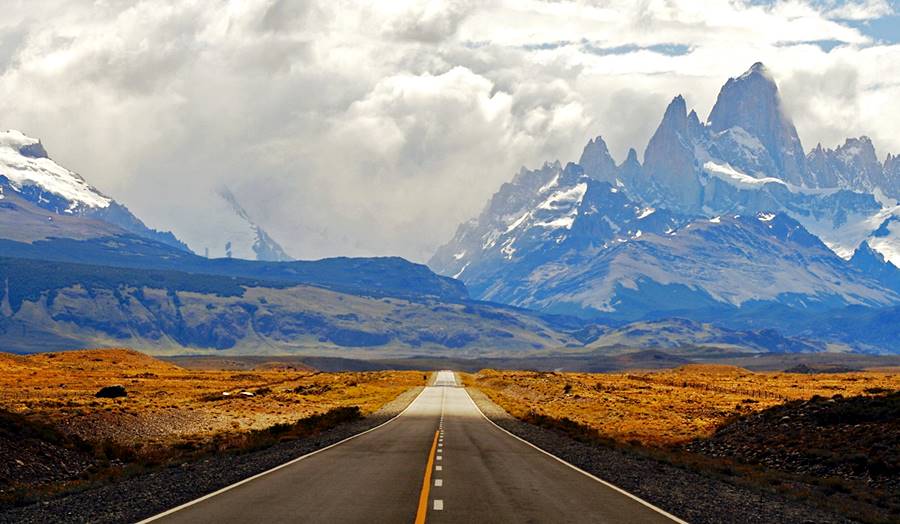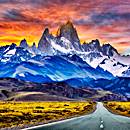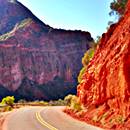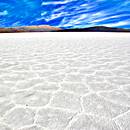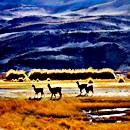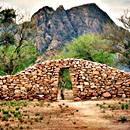Ripio, the South American Gravel Roads
Ruta 40's road surface
Part of the myth of Ruta 40 was its difficulty: long sections of hundreds of miles of tough gravel road, with a ridged washboard surface, potholes and lose stones and sand blasting the underside of your car.
Paving work done over the past ten years have paved most of Ruta 40 and roadwork is continuing, but there still are some very difficult gravel and dirt sections on Ruta 40.
Ripio = gravel
The Spanish word "ripio" (pronounced "ree-pee-oh") comes from the latin word "replum" which is a derivation of the verb "replere" which means "to fill in". It was deformed in early Spanish to "rípel" meaning rubble, debris, gravel, and in turn led to the Portuguese word for "pebble".
The "Ripio" (Gravel) Sections
There are Six (6) unpaved sections along Ruta 40, two in the north, one in Mendoza Province and the other three in the province of Santa Cruz in Patagonia
Gravel in the North
La Quiaca to San Antonio de los Cobres: Gravel
The leg of Ruta 40 between the town of La Quiaca in Jujuy and Cafayate in Salta is almost totally unpaved. We will first mention the leg from La Quiaca to San Antonio de los Cobres:
We describe this part of Ruta 40 in our Section 16 (a mile-by-mile detailed itinerary).
This section is 276 miles (444 km) long and only 2 miles (3.2 km) of it are paved (at Susques, where Ruta 40 overlaps the paved Ruta Nacional 52 (see this map of the paved part in Susques).
This is the map of the whole section from San Antonio de los Cobres to La Quiaca.
This part of Ruta 40 is mostly gravel, but there are sandy patches which can be quite tricky. The road fords many dry rivers which can carry water during the wet season, it also fords the wide Granadas river (a 500 yard ford along the gravel, sand and water of the river) close to the village of San Juan de Oro.
It even runs along the bed of a river, the "rio Oros" River along Paicone Canyon. This is a 7.5 mile-long (12 km) section of winding "natural" road at an altitude of 13,270 ft (4.050 m) near the town of Oros in Jujuy. (See this Map with directionsa).
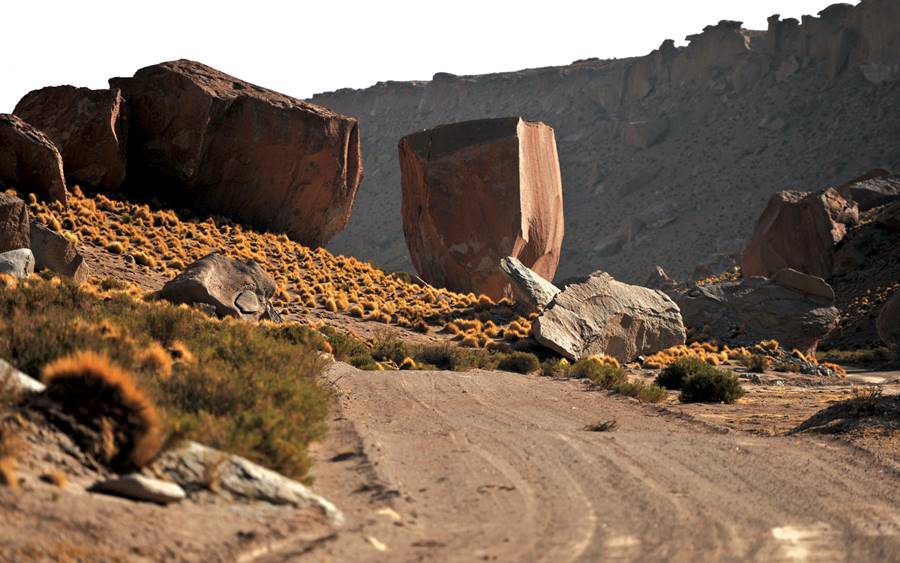
The second gravel section runs between San Antonio de los Cobres and Cafayate, with a short paved section into Cachi. We describe this leg below:
Gravel from San Antonio de los Cobres to Cachi
The section spans 90 miles, 145 km and has only two paved legs:
- The first 12,3 km from Cachi to Payogasta (Map)
- The final 13,1 km from the junction of Ruta 40 and 51 in Muñano to San Antonio de los Cobres (Map)
The rest is gravel, rock, sand (119,6 km).
This part of Ruta 40 crosses the highest point of the whole alignment, at Abra del Acay Pass, which is the highest road pass in the whole world on a national highway and it is also the highest road outside of Asia: at 4,895 meters (16,060 feet) above sea level.
Acay Pass is a narrow -one lane- cliff hanging track.
Complete information about the Abra del Acay
Visit our page on the Acay Pass to learn about its difficulty, when to drive it and what safety tips to bear in mind:
Gravel surfaced Ruta 40 zig-zagging up to the pass

Cachi a Cafayate gravel section
View of Ruta 40 (lower right) at the "Quebrada de las Flechas"
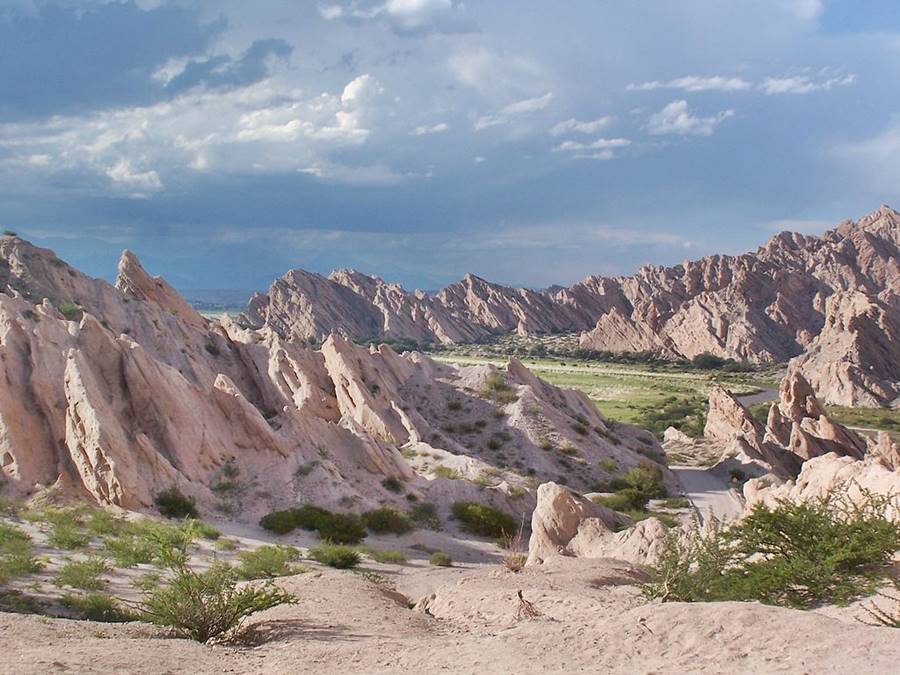
Read more about the Quebrada de las Flechas
Visit our page where we provide full information on it:
The first part of this section between Cafayate (Spanish webpage) and the town of San Carlos is paved. This is a 19.2 mi. (31 km) paved leg, the rest is gravel (80 mi. - 128 km) and is shown in this map.
We describe this unpaved section in our Section 14 webpage (Santa María to Cachi).
The next section south of San Carlos is paved all the way to the town of Bardas Blancas in the province of Mendoza This is a section over 1200 km long of paved highway; see this map of this paved section from Fuerte Quemado to Pareditas.
Ruta 40: Gravel in Mendoza
South of Pareditas was one of the worst sections of Ruta 40. It has been paved and opened to the public in July 2019.
We describe it as part of Section 9 (Barrancas to Pareditas, in Mendoza province).
Brand New paved section from Pareditas to El Sosneado:


The whole northern and central part of Mendoza has a paved Ruta 40, it continues paved through the town of Malargüe and all the way to the hamlet of Bardas Blancas, this is a 72 mi (116 km) long paved section (see map).
South of Bardas Blancas, and all the way to the junction of Ruta 40 with Ruta Provincial 221 it is gravel road which is being paved, so you will encounter roadworks.
106 km (66 mi) of gravel.
See this Map of the gravel section from Bardas Blancas to Ruta Provincial 221.
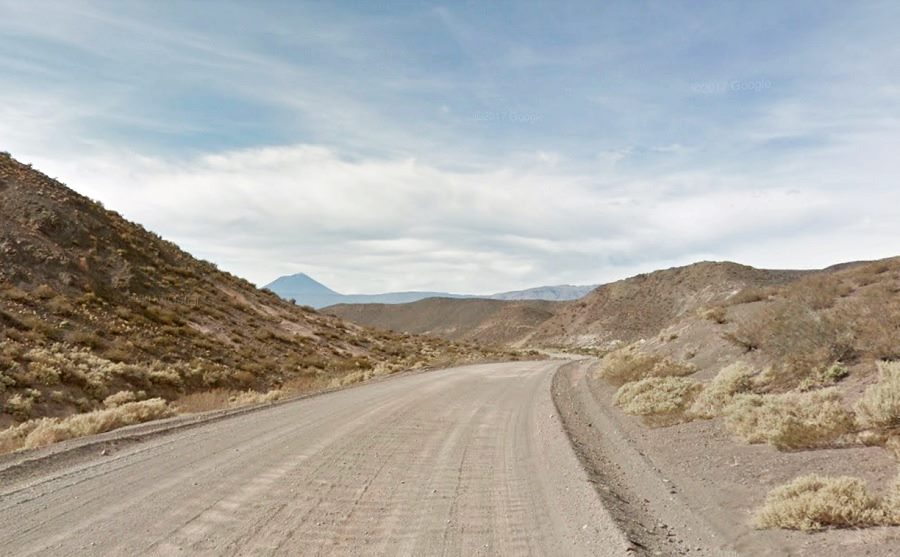
Paved Road begins again
South of the junction with RP 221, in Mendoza, Ruta 40 begins a very long paved section: it is completely paved across the provinces of Neuquén, Río Negro and Chubut.
And in the province of Santa Cruz, it is all the way to Gobernador Gregores. Passing that town, at Lago Cardiel lake junction the paved road ends, after a stretch of 1,260 miles or 2.028 km (Paved section map).
Below we detail the three unpaved segments in Santa Cruz province:
Gravel in Santa Cruz
There are three unpaved gravel road sections in the province:
>> Interactive map of Ruta 40 in Santa Cruz, with gravel and paved segments.
- From Cabo Vírgenes to Ruta Nacional 3, (Described in our Section 1 webpage)
- Some parts of Section 2 (close to the town of Río Turbio)
- And the leg between the town of Tres Lagos and Cardiel Lake (described in section 4)
Cabo Virgenes to Ruta Nacional 3
This is a 69 mi (111 km) stretch of gravel. Flat with washboarding. (map).

Río Blanco to Turbio Viejo
This is an unpaved segment from milepost km 310 to km 358: 30 miles or 48 km of dirt and gravel which can get very muddy during the rainy season.
See this map of the gravel-dirt road.
Tres Lagos to Cardiel Lake Junction
The final gravel leg in Santa Cruz spans km 860 to 932, a stretch of 45 mi. 72 km. Shown in this map.
Safe Driving on a Gravel Road
What is a gravel road?
A gravel road is an unpaved road whose surface is made up of broken-down rock of various sizes. They usually are smaller than 0.8 inches (2 cm) but in Patagonia you may encounter "Canto Rodado" rounded pebbles with a diameter of 2 inches or even more (more than 5 cm). They are tough on the suspension and the car's under body.
Gravel surfaces are cheaper to build than concrete or bitumen paved roads, but if they are not well maintained they can deteriorate and washboarding can ocurr and ruts and potholes can form.
Washboarding
A corrugated surface, with transverse ripple is very commonly seen on gravel roads. It is very unfomfortable and may cause vehicles to lose traction.
Gravel roads come in all shapes and sizes: some are narrow one-lane tracks, others are wide and accommodate two lanes of traffic.
Some are smother with smaller gravel particle sizes, others are rough with larger pebbles. Some have hard surfaces others are sandy and your vehicle may sink in it.
Safety Tips for driving on gravel roads
Pay attention, keep focused on the road conditions and its surface.
They can be dusty if there is plenty of traffic, so be on the lookout for other vehicles, cyclists, wildlife or cattle on the road.
There is no centerline so keep to your right when you meet an oncoming vehicle.
Flying stones can break your windshield or a headlamp! Slow down when overtaking a vehicle or when you meet oncoming traffic, move right to leave space. Don't tailgate the vehicle that is ahead of you, leave distance or overtake it.
Rain can wet the road and make it muddy, which makes the road more slippery. Drive with caution on a muddy dirt road and keep a reasonable speed so as not to get stuck in the mud. Try lower gears (2nd or even 1st.).
Gravel tends to build up on the sides of the road, it can be slippery too, and can provoke a roll-over.
Watch out for the tracks (the rut) made by the traffic, if it is too deep it can rub against your car's undebody.
Speed: drive slowly
Traction on loose gravel is poor so go slower than you'd normally drive. Braking is worse on gravel. The slower you drive, the safer you'll be.
Slow down on the curves and downhill sections. Slow down when you pass a stopped vehicle, overtake or meet one coming in the opposite direction.
Stay in the tracks made by other vehicles, it will be more level and less rough.
Keep a safe distance with the vehicle ahead of you: less dust and less risk of flying rocks against your car, aim at least for a six (6) seconds gap.
Skidding
You will skid on gravel or mud. Keep calm, take your foot off the gas, and don't hit the brake, steer in the direction you want to go. As soon as the skid stops, continue driving, but slower.
Don't "overdrive", steer smoothly with both hands on the steering wheel: If you turn the steering sharply, instead of turning, the inertia and skidding will keep the car moving in the same direction it had. So keep focused and plan your maneouvers.
Steer into the slide: Turn your front wheels in the same direction that the rear of the vehicle is sliding. So if the back of your car slides to the left, turn the wheel to the left.
Hotels & Accommodation along Ruta 40
Find your room in each province along the highway
Find Lodging
>> Hotels in City of Salta
Hotels in each province along Ruta 40
Must-See stops near Ruta 40
>> Find your room in Salta Province

